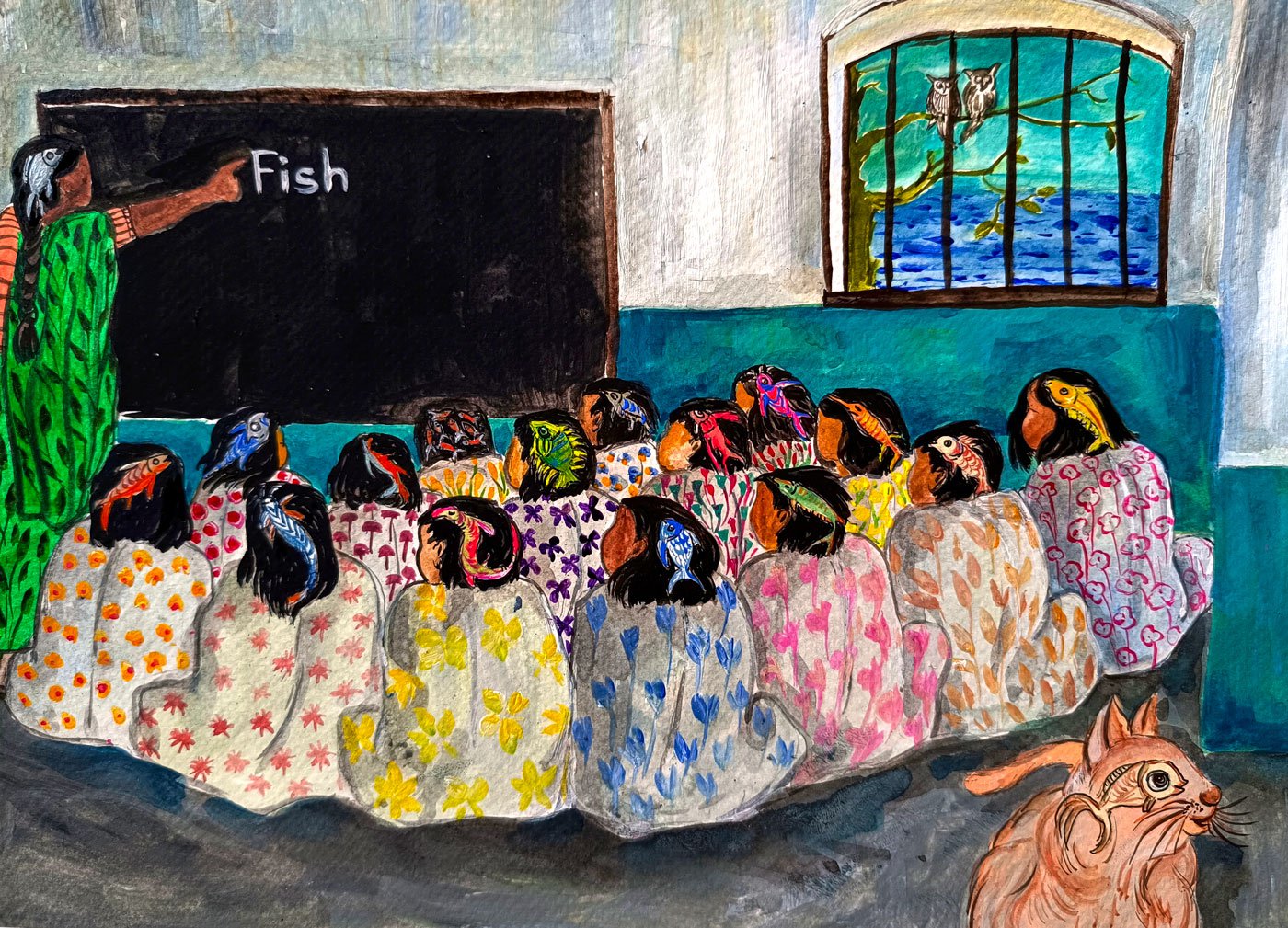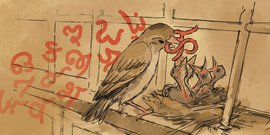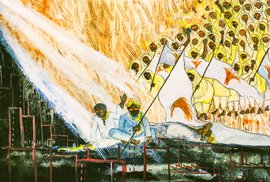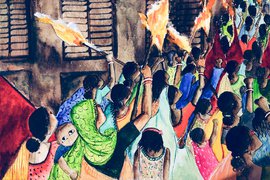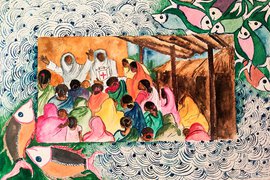Let us start at the very beginning…
The epic tale of this nation’s diversity that the People’s Archive of Rural India (PARI) has been chronicling since 2014, begins with Indian languages – 833 million people in the countryside speaking in well over 700 different tongues, using 86 different scripts. These languages, including those without any script, lie at the heart of India’s cultural diversity. Without them, an archive of the people cannot be imagined, let alone actualised. Translations across Indian languages play a pivotal role in the journey of every single PARI story.
“This archive has been a pioneer in the realm of journalism; it looks at translation through the lens of social justice,” says Smita Khator. “It ensures that production and dissemination of knowledge do not remain the privilege of English-educated, English-speaking classes, not when a majority of rural Indians still live light years away from the English language.”
Our team of language editors and translators frequently share, debate and discuss the cultural context of words, the appropriateness of phrases and more. Just the other day…
Smita: Remember that Purusottam Thakur story where he describes a scene when the migrants from Kurumpuri panchayat working at the kiln in Telangana were so happy to see him? One of the older men tells him, "After a long time I have met someone who speaks Odia. I am very happy to see you! ”
And one from Maharashtra by Jyoti Shinoli about this boy of migrant labourers called Raghu, whose biggest challenge was to get used to a new school where the teachers and friends spoke in a language he did not understand. Gayatri, the mother of the boy in the story says, “After attending the Chennai school for just three weeks, he returned home crying one day. He said he didn't want to go to school anymore. That he didn’t understand anything there and felt everyone spoke angrily with him.”
Linguistic identity is critical to people in rural India, especially when they are forced to migrate to faraway places in search of livelihood.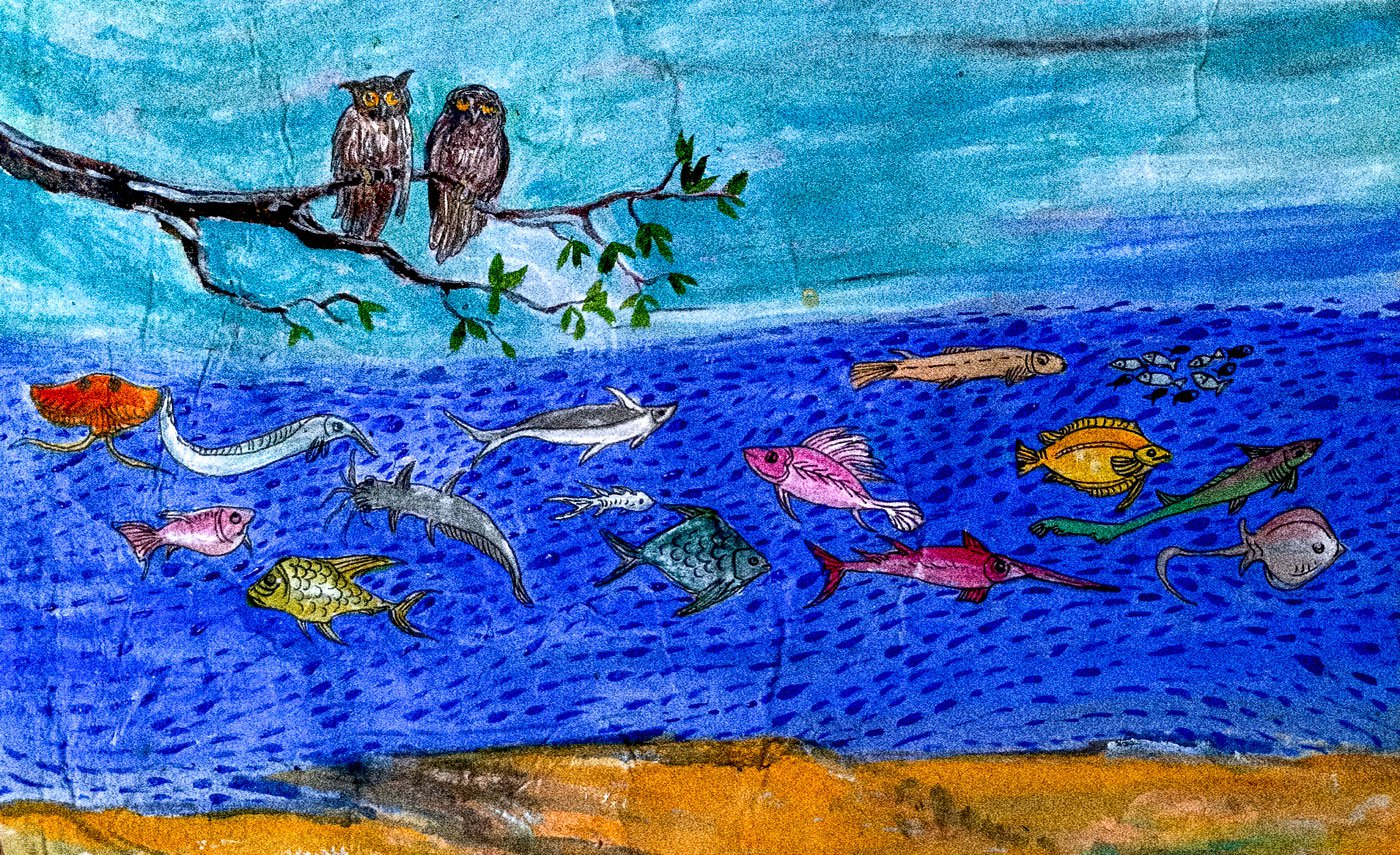
Shankar: But Smita, sometimes words also migrate. When I was working on Senthalir’s story on hand-pollinators, I realised that the women in the field use an English word - ‘cross’ or ‘crossing’ - to refer to their work of cross-pollinating flowers by hand. An English word has now become a part of their spoken language. You will hear a lot of such words in the countryside.
This is both, exciting and challenging. There are also times when I read some of the stories from my own state, Karnataka, reported in English, and the voices of the working people there sound like they don’t belong there. They are like imaginary characters in a book. They lack life and colour. So, when I sit down to translate, I often make sure I listen to the people, the way they talk, making sure that the story really belongs to them, and does not become a work of reported ‘art’.
Pratishtha: The process is not always easy or straightforward. I often struggle with the copy of reporters writing in their mother tongue. A story, originally written in Gujarati or Hindi reads really well. But when I faithfully translate that into English, the organisation, the sentence structure, the diction can feel quite contrived. And then I wonder where my loyalties should lie in such situations. Do I remain faithful to the spirit of the story, invoking the experience of the marginalised communities in the translation, or do I remain true to the original script, the words used, the structure? Do I edit in the Indian language, or do I edit in English? Finally, it ends up being a long process, exchanging ideas and sometimes an argument with back and forth.
Translation is possible because there are ways of connecting and
communicating across languages. But the close-knit relationships among the
images, sounds, diction, the knowledge repertoire of a language and its
cultural universe, its distinct character – is something I have come to
appreciate only after working with PARI. There are times when we have carried
the same story in two versions in two languages – not as different stories but
different enough for me to hesitate in calling one version a translation.
Joshua: Pratishtha di , isn’t translation always a re-creation – a transcreation? When I work with grindmill songs in Bangla, I am actually transcreating. Recreating the ovis in my mother tongue forces me to learn and unlearn prosody and parlance repeatedly. I used to think being a poet is tough but translating poetry is harder!
How does someone reforge Marathi oral literature while keeping the whole gamut of expression, idea, imagery, diction, rhyme, rhythm, and metaphors intact? Inspired by rural singer-songwriters, I push my poetry to think like a woman and flow like hapless grains getting crushed in the grind mill of the caste system, patriarchy, and class struggle. Each time, I search for corollaries in rural Bengal's own spectrum of feminine musico-poetic oral traditions, like t usu, bhadu, kulo-jhara gaan, or brotokotha .
Frustrating and fascinating at the same time.
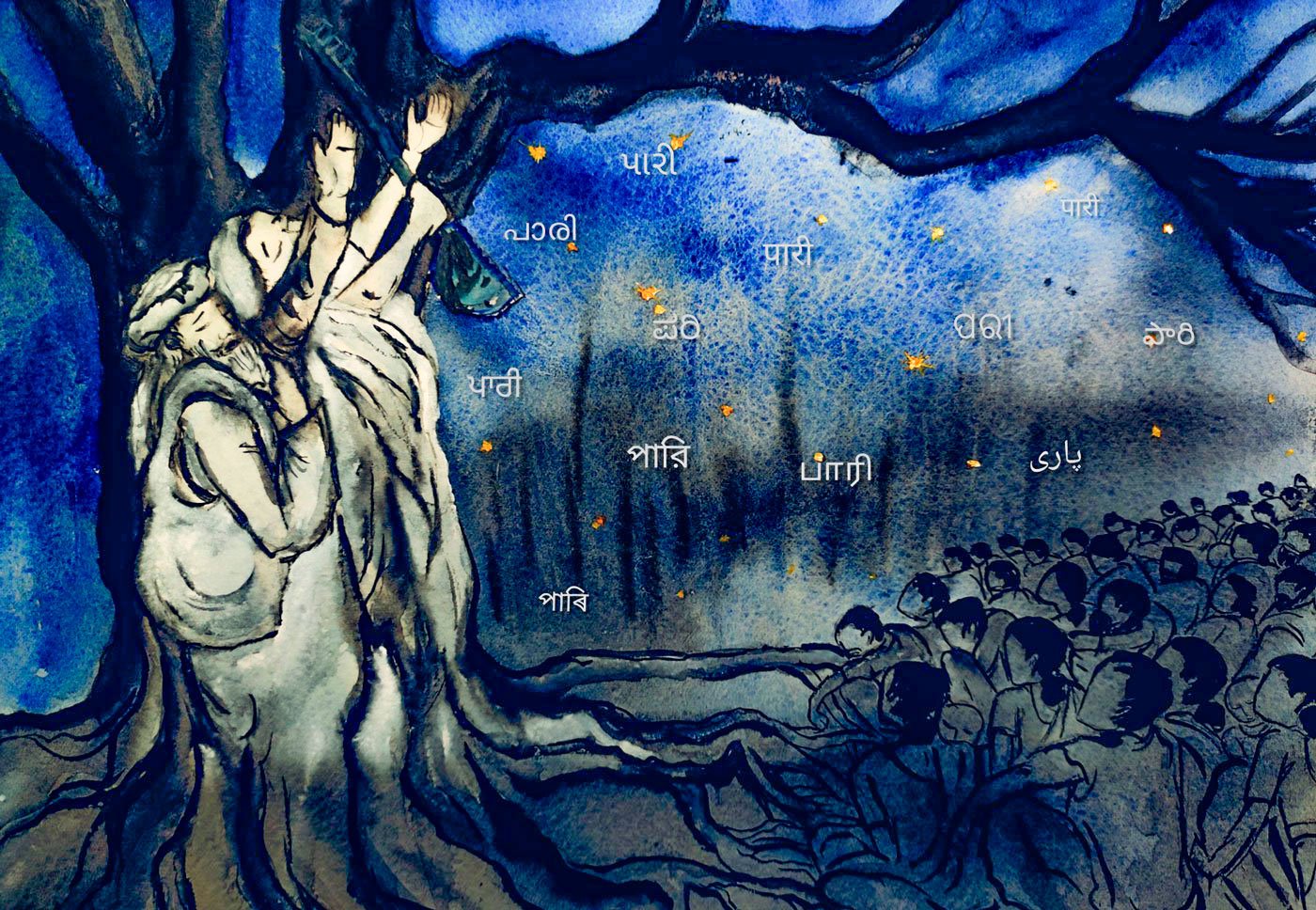
I had to translate its flavour in Marathi without compromising on the details and maintaining the rhythm and pace of the elephant ride.
The challenge started from the headline itself, as it often does with most of PARI stories. In the end, the constant need to feed the giant led me to the famous character of ‘Bakasur’ who had to be fed by the entire village every day. So in Marathi I titled it: हत्ती दादा आणि बकासुराचं पोट .
I feel it is important to find terms, concepts, characters known to our language readers while translating phrases like belly of the beast or Pandora’s box, or theatre of the optics.
Pratishtha: I do see myself never taking such liberties while translating poetry from another culture. But I do understand why one would do that in a PARI story. I think part of the meaning of translation is defined by the reader for whom one is translating the piece.
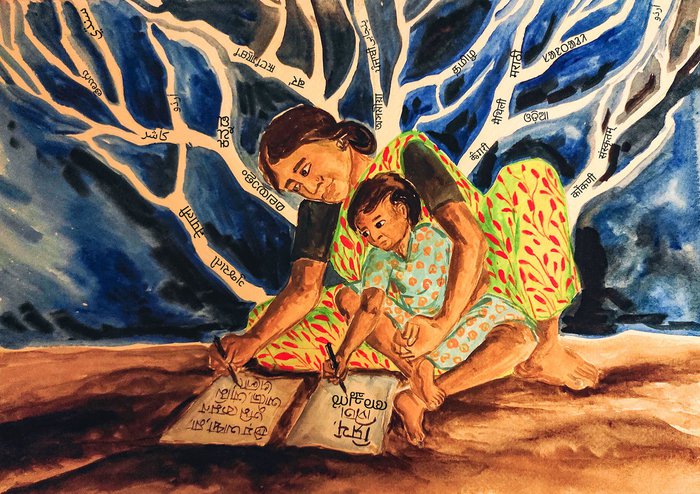
'PARI
translations are never just a linguistic act, or about reducing everything to
the rendering of it in English. They are about reaching out to contexts that
lie beyond our familiar worlds'
–
P.
Sainath
Kamaljit: Let me tell you what happens in Punjabi. There are times when I have to twist the rules of my language, making my own as I translate! I often get criticised for doing this.
For example, all stories in English use a uniform pronoun for all individuals regardless of social distinctions. In Punjabi, as in most other Indian languages, the pronouns change depending on the rank, age, class, social status, gender, and caste of the person. So, while translating a PARI story from English to Punjabi, if I were to follow the social-linguistic norms of my language, it would conflict with our ideological beliefs.
Therefore, we decided from the very beginning that in the process of translating we will treat all human beings with equal respect, whether a guru, a politician, a scientist, a sanitation worker, a male, or a transwoman.
So when we published the story in Punjabi of Manjit Kaur, a Dalit woman, who picks up cow dung in the houses of landlords in Tarn Taran, I started getting messages from readers asking me, “why are you giving so much respect to Manjit Kaur in your language. Manjit Kaur Ik Mazhabi sikh han. Oh zimidaran de gharan da goha chukdi han?” Many readers thought I was doing a machine translation because I did not observe the rules and used ‘ han ’ in place of ‘ hai ’.
Devesh: Arre , even Hindi lacks words that talk about marginalised communities with respect. Words which do not ridicule their realities are hard to find. But the process of translation forces us to tackle this problem and coin new words by taking a cue from other languages.
I have also found problems in finding the right words related to nature, science, gender or sexuality, or even disability. The Hindi lexicon is bereft of appropriate words. Sometimes through sheer glorification of language, fundamental questions are forced to simply disappear - such as women being described as goddesses or people with disabilities being termed as 'divyang'; But when we look at the ground reality, the condition of people seems worse than before.
When we translate a story like Kavitha Iyer’s ‘मैं नलबंदी कराने के लिए घर से अकेली ही निकल गई थी’ we realise that despite an enormous body of literature, the non-literary genres in Hindi hardly have a vivid depiction of people's suffering. A vocabulary that addresses issues of knowledge, science, medicine and health and society has simply not been developed enough.
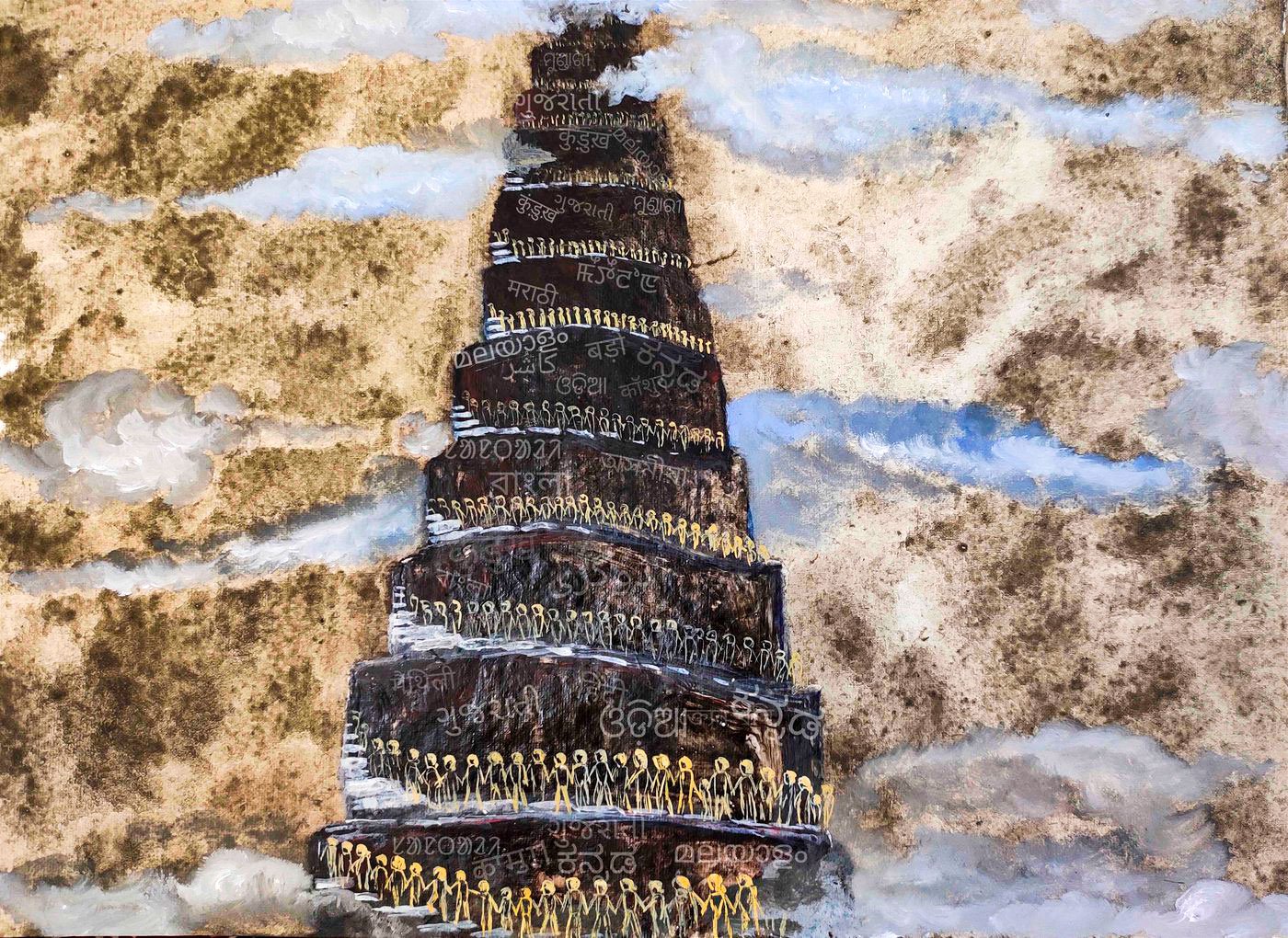
Swarn Kanta : Same story with Bhojpuri. Or worse, because it is a language that has more speakers than writers. Not being an official medium of education, Bhojpuri lacks terms related to newer occupations like medicine, engineering, internet, social media, etc.
One can coin new terms as you suggest, Devesh, but it is confusing. For words like 'transgender', traditionally we used words such as, 'hijra' , 'chhakka' , 'launda' , which are extremely offensive vis-à-vis the terms we use in English. Similarly, no matter how much we try, translating names, like Women's Day, mental health, names of acts or statues (Healthcare Act), names of sports tournaments (Men's International World Cup) etc. is simply impossible.
I remember translating a story of a 19-year-old Shivani from Bihar’s Samastipur district, a Mahadalit girl fighting her own family and the outside world against caste and gender-discrimination. I realised that though I had intimate knowledge of such discriminatory practices, these kind of stories from real life were never available for us to read.
Translations, I believe, contribute to the intellectual and social growth of a community.
Nirmal: As also of a language when working in the absence of a standardised one. There are more than two dozen different forms of the Chhattisgarhi language in the five parts of Chhattisgarh – North, South, East, West and Central. So, while translating into Chhattisgarhi, the absence of a standard form is a challenge. Often, I am very confused about choosing a particular word. I seek help from journalist friends, editors, writers, teachers, and refer to books.
While working on Sainath’s story, Beware of contractors bearing gifts I came across many Chhattisgarhi words which are not in common use. Surguja area of Chhattisgarh is adjacent to the border of Jharkhand where Oraon Adivasis are a majority. Words related to forests are common in their spoken Chhattisgarhi. Since the story focused on a woman from the same community, I tried to connect with the Adivasis, deployed words they use in daily life in their area. However, the people in the community speak in Kurukh.
It was simply amazing to know how words like sukurdum, kauvva, hanka, hanke, landa, phanda, kheda, alkarha that were once ingrained in the daily life are no longer in use because communities do not have access to their water, forests and land.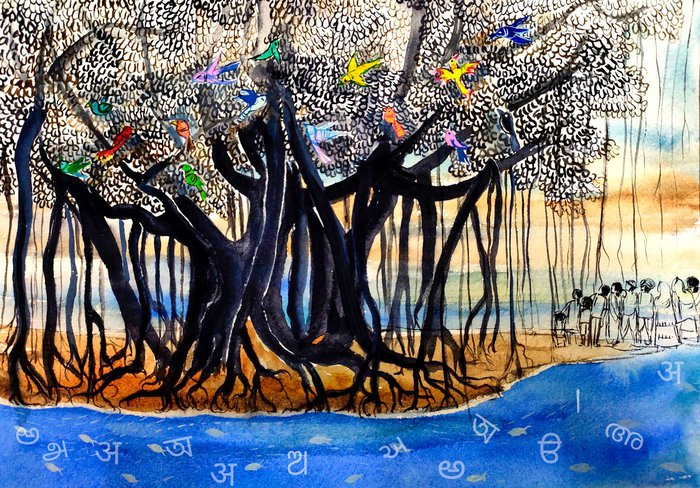
'So much of our ecology, livelihoods and democracy are all intricately linked to the future of our languages. The enormous variety they bring has never seemed more precious' – P. Sainath
Pankaj: I realise how important it is for a translator to get into the world of the people that one is translating. Working on the story of Arush did not just introduce me to the intensity of love between a transgender man and a woman, but also to the complexity of their struggle. I learnt to think carefully about the terminologies to find the right one, for example, to place 'reassignment surgery' within brackets and highlight 'gender affirmation surgery'.
I found terms representing transgender persons that are not derogatory or demeaning: rupantorkami purush or nari , or if gender is affirmed, we call it rupantorito purush or nari . That's a beautiful word. Again, we have a word for lesbian or gay – somokami . But till date we do not have a standard term that upholds the dignity of queer people, so we simply transliterate.
Rajasangeethan: Pankaj, I am thinking of another story that dealt with sex workers in the time of covid-19 pandemic. I was quite moved on reading it. When the world was trying to tackle this newfound disease, with a systematic arrogance and indifference towards the poor, the problems of ordinary Indians just multiplied. At a time when life was hard even for the privileged people, who was there to pay any heed to those on margins of the society? Aakanksha’s Kamathipura piece forced us to face the sufferings of people, who had never entered our consciousness before.
The little suffocating rooms where they lived and had their clients come, now had to accommodate young children home from school in the wake of a nation-wide lockdown. What would this new situation do to the children in the family? As a sex worker and mother, Priya was being torn between her own emotions and struggles for survival. And her son Vikram was struggling to find meaning in his life among the gloom that surrounds their existence.
The ideas about family, love, hope, happiness and nurture take shocking forms in this story, but surprisingly retain the same societal meanings. It is only when I translated these stories that I came to appreciate the inner quest of all human beings for hope against hope.
Sudhamayi: I cannot agree more. I had no idea at all about the LGBTQIA+ community before I started translating their stories. To be honest, I feared the people and the subject. When I saw people from the trans community on the roads, near the signals, or when they came to our houses, I was afraid to even look at them. I too used to think that they behaved in some unnatural way.
I had to look for people who knew the subject and would do justice to the terminologies when it came to translating stories on the community. And in the process of reading, understanding and later editing those stories, I gained more knowledge and got rid of my transphobia. Now wherever and whenever I see them, I exchange a few words with them, and quite fondly.
I would say, translation is a way of getting rid of one’s own prejudices, a way to grow.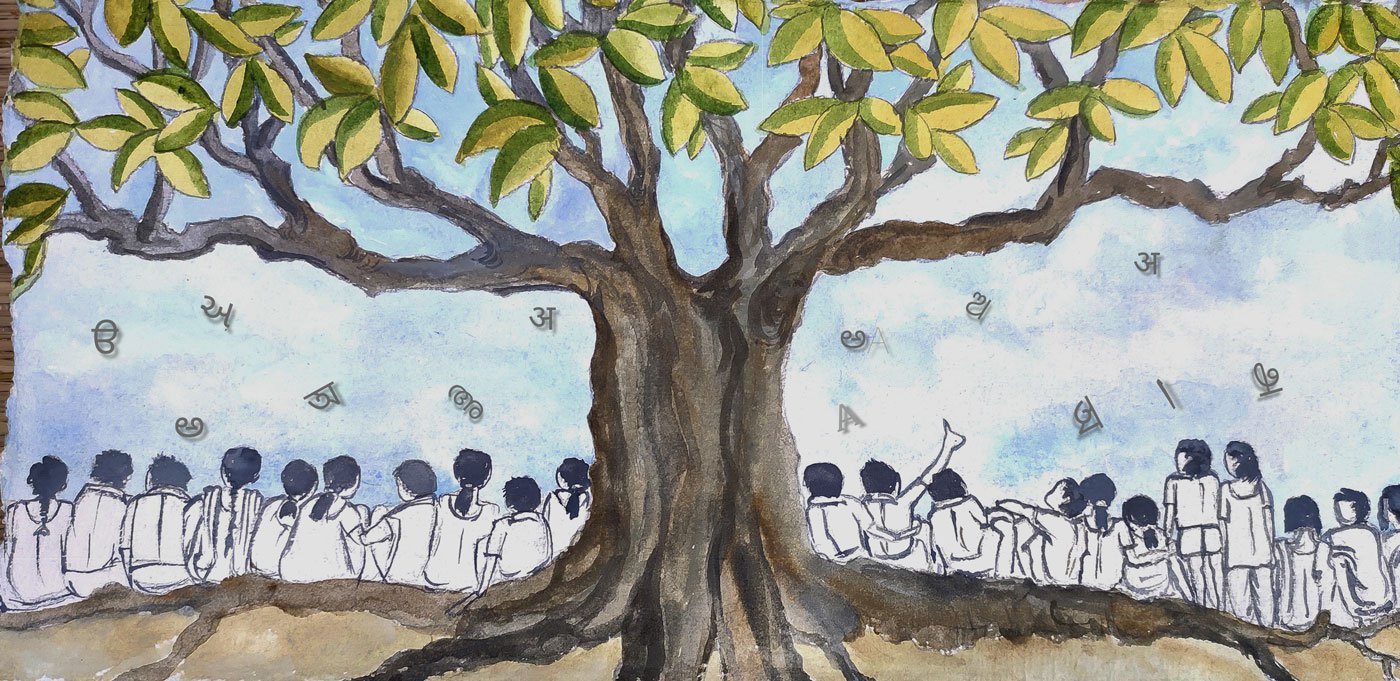
Pranati: I felt that way about many of the cultural stories that we translated. There is ample scope for a translator to learn about various cultural practices by just reading closely and carefully translating the content that comes from varied cultural sources. It becomes imperative to understand the cultural nuances of a given content in the original language.
In former British colonies like India, English has become the connecting language. Sometimes we do not know the original language of the people and depend on English for our work. But a conscientious translator, working diligently and patiently learning different cultural practices, histories, and languages, can deliver a good result.
Rajeeve: No matter how patient I am, sometimes I just cannot find an equivalent word in my language, especially when I am doing a story that relates to specific occupations. It is a challenge to describe those intricate processes in detail with the right names for the tools and all. In the Ufaq Fatima story about weavers from Kashmir, I struggled to translate the names of weaving patterns, like charkhana and chashm-e-bulbul . There were no equivalent terms in Malayalam and so I ended up using a couple of descriptive phrases. Even the word pattu was interesting. In Kashmir, it was a woven woollen fabric, while in Malayalam pattu is a silk cloth.
Qamar: Vocabulary is a weak point even in Urdu, especially when one is to translate pieces on climate change and women’s reproductive rights on PARI. The story of Hindi is a bit different. It is a language sponsored by the central government; it enjoys state government support. They have institutions dedicated to it. So new terminologies come into the language quickly, unlike in Urdu, where we continue to use English terms for many things in translations.
Urdu was once important. History tells us that institutions like Delhi College and Osmania University, Hyderabad were famous for translations of Urdu texts. The primary purpose of Fort William College in Calcutta was to train British officers in Indian languages, to carry out translations. Today all those places are dead. We have all seen the fight between Urdu and Hindi that has continued beyond 1947 and the focus on Urdu has completely disappeared.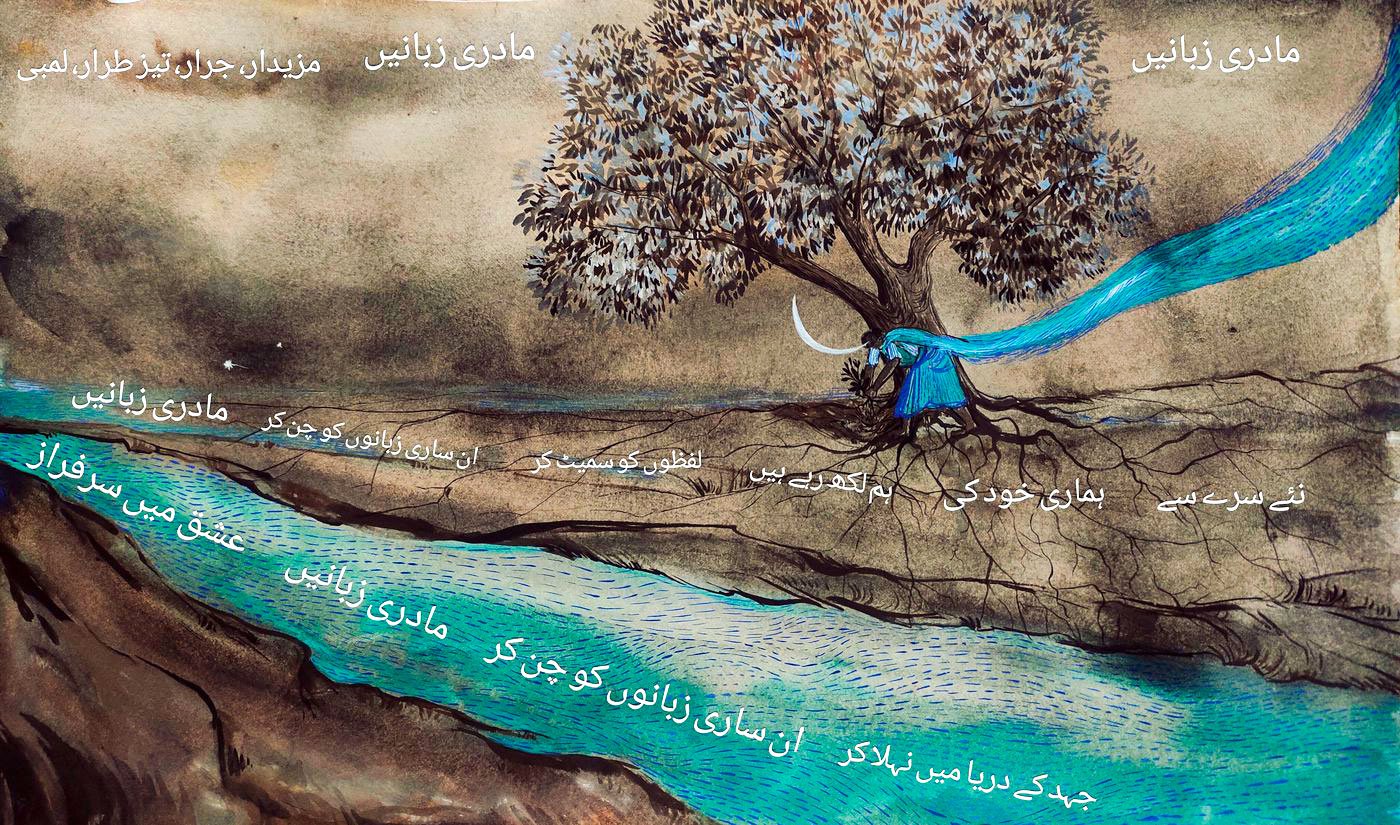
Kamaljit: Do you think the Partition led to a language divide? I don’t think languages can be divisive, although people are.
Qamar: There was a time when Urdu belonged to the entire nation. It was there even in the south. They called it Dakhani (or Deccani) Urdu. There were poets writing in the language and whose works were a part of classical Urdu syllabus. But with the end of the Muslim rule all of it came to an end. And in modern India Urdu survived in what we call the Hindi belt including Uttar Pradesh, Bihar, Bengal.
Here people were taught Urdu in schools. And this had nothing to do with being a Hindu or a Muslim. I know of people, Hindus, senior people working in the media, who tell me that they know Urdu. They studied the language in their childhood, in school. But now they do not teach Urdu. How will a language survive if you do not teach it anymore?
Earlier one could secure a job by studying Urdu, but not anymore. There were still a few newspapers, and people who wrote for Urdu media a few years ago. But after 2014 even newspapers have died as their funding dried up. People do speak the language but the number of those who can read and write in this language has fallen dramatically.
Devesh: This is such a true and tragic story of language and politics, Qamar da . But then today who reads the stories you translate here? What meaning do you see in your work?
Qamar: Oh, I said that the first time I was at an annual meeting of PARI soon after I had joined. I felt that people here were interested in preserving my language. This is why I am with PARI even today. It is not just about Urdu, but the archive is committed to save each and every endangered language from extinction and erasure.
This story is written by PARIBhasha team Devesh (Hindi), Joshua Bodhinetra (Bangla), Kamaljit Kaur (Punjabi), Medha Kale (Marathi), Mohd Qamar Tabrez (Urdu), Nirmal Kumar Sahu (Chhattisgarhi), Pankaj Das (Assamese), Pranati Parida (Odia), Pratishtha Pandya (Gujarati), Rajasangeethan (Tamil), Rajeeve Chelanat (Malayalam), Smita Khator (Bangla), Swarn Kanta (Bhojpuri), Shankar N. Kenchanuru (Kannada), and Sudhamayi Sattenapalli (Telugu). And edited by Pratishtha Pandya with support from Smita Khator, Medha Kale and Joshua Bodhinetra. Layout: Binaifer Bharucha.